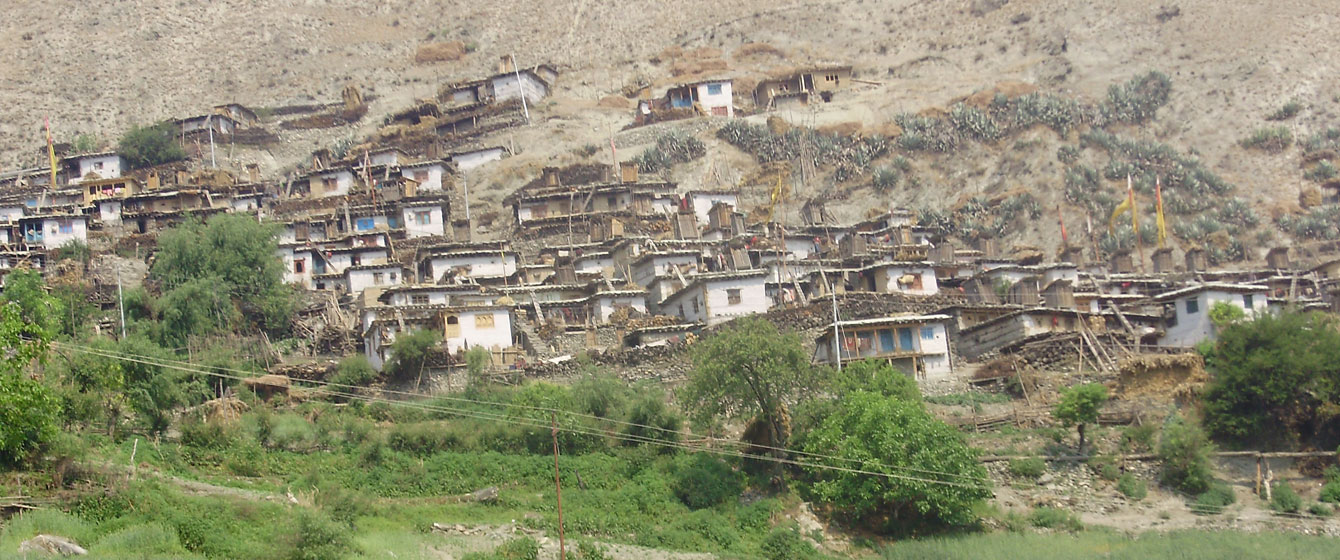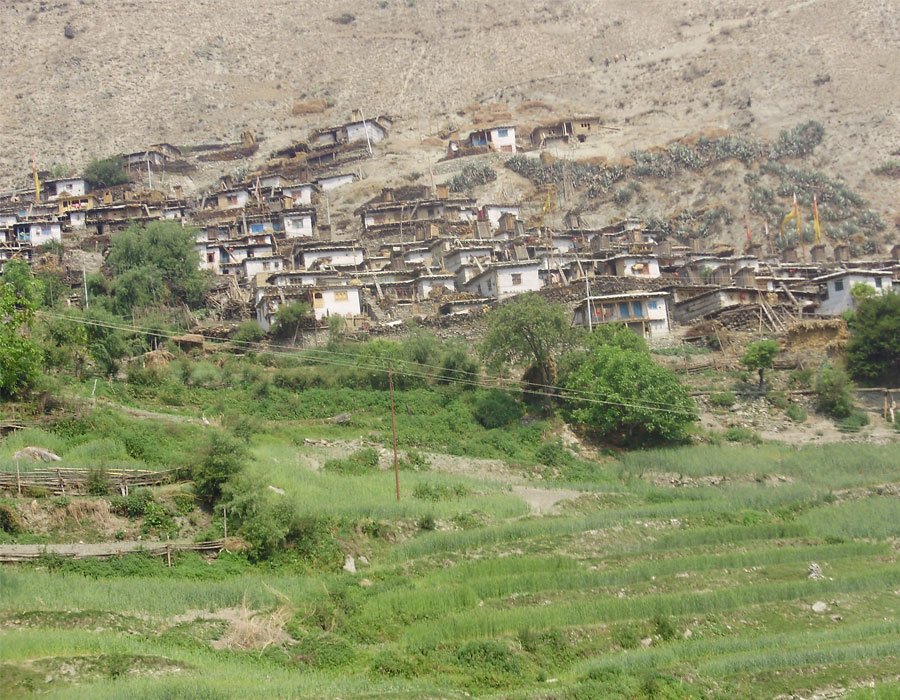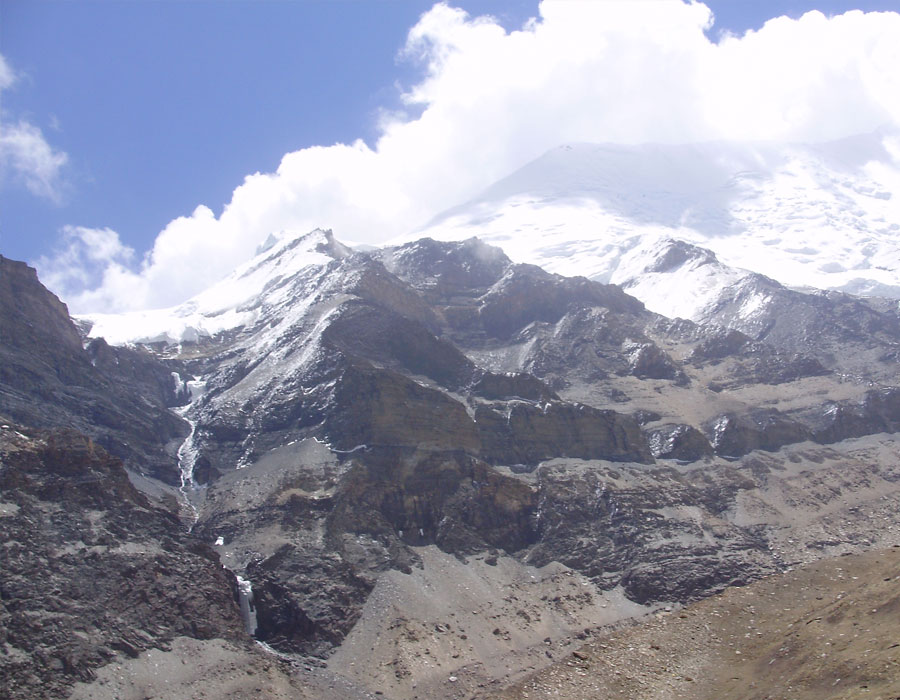Trip Facts
- Total Duration 24 Days
- Trip Grade Challenging
- Max Altitude Kathmandu
- Group Size 2 - 10 Pax
- Start From Kathmandu
- End From Kathmandu
- Trip Mode Trekking
- Accommodation Hotel/Teahouse
- Best Season ...
Himalayan sights: Sisne Himal (5849m), Mt Api (7132m), Mt Api West (7100m), Mt Saipal (7031m), Mt Rakshya Uda (6593m), Kandey Himchuli (6227m), Mt Buraburi (5387m), Tsokalpo Khang (6556m), Wedge peak (6139m), Mt Kangchune (6443m), Bijala Himchuli (6386m), Mt Paltathumba (6157m), Hanging Peak (6500m), Kang Peak (6224m), Yaja Peak (5962m), Mt Dhaulagri (8167m) & more.
Dolpo Kagmara Trek is one of the most challenging treks into the Himalayan wilderness. The trek touches to distinct valleys in the western region of Nepal, Jumla and Dolpo. Jumla is one of the remotest and underdeveloped districts of Nepal. You can get to Jumla by directly flying from Nepalgunj. On your flight to Jumla, there are spectacular views of Langtang, Manaslu, Dhaulagiri and Annapurna on the northern horizon. You will have to cross the Kagmara La pass, a Himalayan pass at an astounding altitude of 5100m, before you enter Dolpo Valley. The Kagmara La pass offers a beautiful vista of Ghyuthumba, Matathumba, Kanjiroba, Kagmara, and Api Himal peaks.
Once in Dolpa region, last preserve of Tibetan Buddhist and culture on Nepal side of the Himalaya, you will find yourself surrounded by Dhaulagiri Himalayan range in the south and Tibet in the north. The trail passes through Ringmo village which opens up to the breathtaking view of Phoksumdo Lake (3612m) a freshwater wetland and a sacred site of Tibetan Buddhism.
From here you proceed ahead to cross two high passes, namely Bagar La (5182m) and Numa La (5190m) followed by a visit to Tsering Gompa at an altitude of approx. 4000m. From thereon you drop down Juphal via Lahini and Tarakot.
Trip Itinerary
Day 01: Arrival to Kathmandu & transfer to hotel.
Day 02: We take the flight to Nepalgunja from Kathmandu, in the mid-far west of Nepal. This one-hours flight is quite memorable as it is traversed the entire length of the Nepalese Himalayas to west of Kathmandu. The superb views of Mount Langtang, Mount Manaslu, Mount Annapurnas, Mount Dhaulagiri and finally Dolpa are clearly visible. Nepalgunja is close to the Indian border, and quite warm in comparison with Kathmandu. We check out from the Hotel and fifteen minutes drive to the Kathmandu airport and fly to Nepalgunja.
Day 03: We have to be at the airport early as we take the first flight to Jumla, which takes only half an hour at the campsite from the airstrip where we meet our porters and kitchen crews; who have walked there ahead ten days early. This resting day gives us time for our preparations nicely for our trip.
Day 04: The starting day usually starts to the day are after our breakfast at by 8.30am. The first day is always a bit slow. Following the path heading south east from Jumla, on the left (true right side of the river Tila, a bridge is reached after an hour and a half to Garjankot (lunch); where we stop there for lunch. A slightly longer walk in the afternoon passes a few houses; and going via the irrigation channel on the right, from where there is a lovely view of the rolling hills around the surroundings. The camp is 200m below at a sheep pasture known as Gothi Chaur (2800m).
Day 05: The trail drops down ahead the banks of a tributary of the Tila River which is crossed by a small bridge to the main river and the bridge s there to its left bank. Alpine forests and clear streams are the order of the day and two hours after leaving the camp you reach the village of Munigaon; where there is a police check post. The main trail continues southeast to Jajarkot and the Bheri River. Our route turns to the east by the check post staying on the left side of the river instead of crossing the bridge. After 20 minutes another bridge comes there; which is followed to a lunch stop 20 minutes further. And now there are seen in large numbers soaring trees. After lunch, a short afternoon's walk leads to the village of Naphukhona with a large Tibetan Chorten. Our campsite is 10 minute further below the Gompa (3100m).
Day 06: Following the river through some of the most superb forest so far seen, lunch is taken after only two hours and we start off to climb the Maure La (3927m). The climb from the lunch spot takes around 45 minutes. And the wonderful views of the Bheri River Valley and the Peaks of Ghyuthumba and Matathumba are adjacent to us. The first peaks to climbe in Dolpo in1953 was by Dr. Herbert Tichy. In the distance a hundred Miles away, the huge Api HImal is the dominating the other peaks to the west. It is well worthy for a superb view of the Dhaulagiri Massif and Annapurna II from there.
Day 07: An extremely enjoyable walks, t through more forest, which yields the first view of the Kagmara Lekh and the Bheri River itself. The path can be seen detouring across the hillside through the village of Chaurkot. Lunch is taken by the stream side. The village Rimi and Kaigaon are soon clearly visible and the path drops down through Rimi, which is quite dirty, to the more picturesque. Kaigaon village stays on the left side of the river, after further on below the village Hurikot is located. (2650m). A monastery is being built just above the campsite and it is normal for groups to give some donation.
Day 08: Follow the stream to the village, which is of Tibetan characteristic. The path climbs gradually staying high above the Garpung Khola for two hours until it reaches the Jagdula Khola and a lunch stop at the army post on the opposite side (2950m). A steep climb for half an hour leads to an excellent view to Kagmara . Continuing along the left bank to camp by a bridge crossing the Garpung Khola appears there.
Day 09: A short morning's walk and a rest afternoon. Cross the bridge and follow the river for two hours to reach a fine point of the route ahead, including the campsite, which is an hour further. The first night we stay there at 4000 meters.
Day 10: A big day is to cross the Kagmara La (5100m). Taking a packed lunch, follow the right bank of the river for a short way until the path becomes slightly arduous below a steep climb. Reaching on the top of this, the pass is marked in the traditional Tibetan way with hundreds of prayer flags, and the view is quite stunning. The short climb to the summit of Kagmara RI (5370m) takes no more than half an hour, but the extra view is well worthy here. The mountains of Tibet and Mount Everest are are far away in distance form here becoming an impressive panorama, which is dominated by the Dhaulagiri massif and the Annapurnas. The view to the south and west of the Kagmara Lekh and the Kanjiroba Himal is equally impressive. There is no need to be in a hurry, as the camp site is a mere hour below the pass on a flat grassy land cleared by the river (3450m).
Day 11: The Himalayan blue sheep and wild fox are seen from the camp as well as the numerous birds. A big descent, over 1200 meters, leads through a valley to the village of Pungmo . Camp is made by the Chorten-the entrance to the village.
Day 12: A rest day if you wish, but the spare day is to give everyone the chance to visit the important Gompa above Pungmo. There are in fact two Gompas as we have entered a region where both 'Bon' and 'traditional' Buddhism are practiced. Chortens become very confusing s one dictates an anti- clockwise passing whilst the other clockwise.
However, the lams of both Gompas are willing to show you around for a small donation. To reach them, look out for a wooden bridge below the village. Cross this to the opposite bank of the river and follow the path up through the pine forest past a Chorten. The path becomes quite exposed as it cuts across a cliff to reach the sanctuary.
Day 13: Today's destination is the village of Ringmo by the side of beautiful Phuksumdo Tal (lake). Keeping to the left side of the river, descend for one hour to a military camp (31d50m) at the junction of the Pungmo and Phuksumdo Rivers. Turning left immediately after the camp, follow a delightful path by the Phuksumdo River to a grassy clearing spot for lunch.
The afternoon's walk up to Ringmo is very rewarding as huge rock walls guard the upper valley and as we reach at 3800m Ringmo village, the lake can be seen. Really impressive is the huge waterfall falling down from the Phuksumdo River. From the prayer flags, a pleasant half an hour's walk leads to the village of Ringmo and camp is made on the opposite side of the village (3700m). Crossing the bridge in the village and turn left to reach the lake now is quite fantastic.
Day 14: A resting day in Ringmo is needed that surrounds by the beautiful clear waters of Ringmo Lake. And the nearby monastery is worthy for a visit.
Day 15: The final part of the trek sets out to explore towards the hidden valley of Tarap, considered to be one of the last bastions of Tibetan culture in Nepal. It is an easy day involving a couple of hour's walks in the morning to a Yak grazing pasture by the Manduwa Khola. The path skirts along lodges made out of cliffs for the Yak caravans from Dolpo. The views down the Suli Gad and crossing to the Kagmara Lekh are particularly attractive.
Day 16: Today is a very strenuous cumbersome day crossing the basic Bhanjyang (Bagar La) (5200m). It is also one of the most fascinating parts of the trek as we cross the watershed of the main Himalayan dry Tibetan plateaus. Following the river, the path turns north ups the valley side and climbs steeply to the pass; which is marked by a chorten and the usual prayer standards.
The views to the east and north are now completely contrasted to those of the previous two weeks trekking. The mountain looks orange and brown stretching out towards the north. The pass is often windy and the descent is party rapid to the river below and our camp (4650m). The trail to Shey and Saldang follows the tracks made by Yaks that have made the journey south over the centuries back in the history of Dolpo. At this point we are only three hours from the village of Shey.
Day 17: The Tarap Valley is our today's destination and by the climb to the Numla La (5350m), the walk into this beautiful and wild Tibetan landscape is one of the highlights of the trek. A four to five hour climb leads to the pass and the view is very much stunning awesome. Dhaulagiri-1 the prominent feature, with the rolling Tibetan hills and the Kanjiroba Himal to the west are equally impressive. For an excellent 3600m panorama, climb the small peak to the left of the pass. The path descends gradually into the Tarap Valley. In two to three hours walk, he Champa Gompa is passed on the left and the camp is made a little further down the valley in the first village (4300m).
Day 18: A long day. Due to the openness of the Tarap Valley, the sun heats the tent early in the morning, giving an enjoyment feel to the morning. The mornings walk passes through the villages of Clumaga and Kakar, both extremely interesting with many Chorten, and again both Bun-Po (the ancient pre-Buddhist religion) and Choba (orthodox Buddhist) settlement are seen there. There are two Gompas in Dho, Guru Bumba (Chob) and (Bon) above the village Scipcha Gompa. Leaving Dho (a name given to the last village but actually meaning the upper collection of villages), the Tarap Khola is followed for two hours. At first, on its left bank, near a bridge where, there is the lunch stop. This is the last flat ground for three to four hours as the valley becomes narrow with deep gorges crossed by innumerable small bridges. However, it is an extremely well made path, one of the finest gorge paths around the Himalayan surface, offering you an entertaining afternoon's walk.
Day 19: The path through the gorge continues, switching through the riverbank to way up the cliff side on some amazing constructions! After a long morning's walk (look out for Musk Deer), a large clearing field by the river is reached. This is Lahini and marks the ending of the gorge. The path to Kanigaon (2700m) is ahead where we make our camp.
Day 20: From the check post, ahead to east for a few hundred feet, there is a well mad bridge to cross the left bank of the Barbung Khola, into which the Trap Khola now follows. This river is followed for three hours to the village of Tarakot where we stop for our rest to afternoon.
Day 21: Another easy day, continuing along the Barbung Khola through a beautiful alpine valley to the village of Dunai it is four hours walking to our camp site by the new 'Blue Sheep lodge'.
Day 22: The final day's walk continues along the river to a teashop by the side of the path (One and a half hours), which marks the start of going to the Juphal airstrip. The path climbs steadily, passing through the village of Juphal to the airstrip. Camp is made outside the RNAC office.
Day 23: We take the flight to Nepalgunja for an afternoon & some rest before flying on to Kathmandu on the following day. The views from Phokshumdo Lake to the Annapurna ranges are famous throughout Nepal.
Day 24: Transfer to airport forfinal departure
Trip Cost
2 Persons, Per Person USD 4000
3-5 Person, Per Person USD 3500
6-9 Persons, Per Person USD 3200
10-13 Persons, Per Person USD 3000
14-16 Persons, Per Person USD 2800
17 Persons or more, Per Person USD 2595
What's Included
- 3 nights hotel in Kathmandu with Bed & Breakfast 3 star
- Trekking permit of Rara and Dolpa region
- 2 men tent, Dining & toilet tent, table & chair, Mattresses
- National Park Permit for Rara & Dolpo region
- Food for trekking (Breakfast, lunch, dinner) making by cook
- 1 Trekking Guide, 1 Cook, 1 Kitchen & necessary porter
- Local transportation Airport - Hotel – Airport in Kathmandu
- Flight KTM - Nepalgunj-Jumla & Dolpa-Nepalgunja-Kathmandu
- Life, Medical insurance for Nepali staff
- Trekking allowance, food allowance for trekking staff
- Fare well dinner with typical Nepali folk songs & dance
- Our service charge
What's Excludes
- Lunch, dinner in Kathmandu & Pokhara
- Personal equipment for trekking
- Bar bill, cold drinks, & alcoholic beverage
- Emergency rescue flight
- Tips for staff










